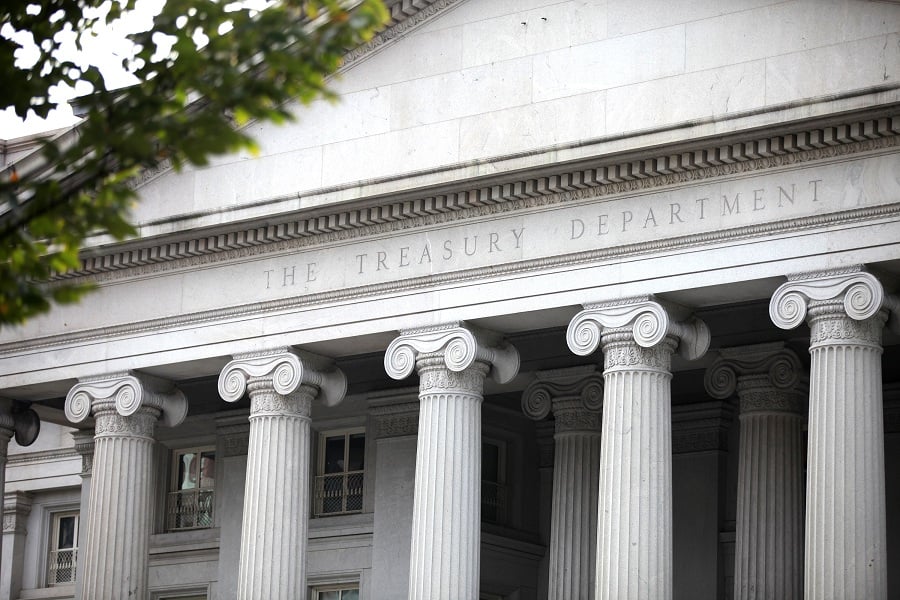

Investors looking to reap big tax breaks for putting money into low-income areas are getting clarity on what they can and can't do as the U.S. Treasury Department finalizes rules governing so-called opportunity zones.
The regulations released by the department on Thursday lay out what property and businesses will qualify for the tax breaks as well as the potential penalties for running afoul of the rules.
The regulations outline how quickly and how much funding investors must provide to get the tax benefits and gives some special leeway for those looking to improve brownfield sites and vacant properties. They also provide information about how large corporations can invest in opportunity zones.
"Opportunity zones are helping to revitalize communities and create jobs for hardworking Americans," Treasury Secretary Steven Mnuchin said in a statement. "These regulations provide clarity and certainty for investors, which will enhance the flow of capital to new and expanding businesses, and create sustained economic growth in communities that have been left behind."
The rules provide more flexible rules for calculating the capital gain income that can be put into opportunity funds. It also gives some investors more time to contribute money to funds, and gives funds more time to deploy that capital.
The final rules come two years after President Donald J. Trump's 2017 tax overhaul created opportunity zones — nearly 9,000 tracts in low-income areas where investors could garner capital gains savings in exchange for financing development.
Proponents are hoping that government clarity would help expand the market for these tax-advantaged funds from a handful of entrepreneurs with an appetite for risk to large institutional investors.
"If you look at the status quo, it's smaller, retail investors who invest a few hundred thousand dollars at a time, which has made fundraising challenging for some funds," said Steve Glickman, a former Obama administration official who helped design the incentives and now does consulting for potential investors. "It's not reaching full potential, though that's starting to change" with some banks and insurance companies investing.
[Recommended video: Mark Tibergien worries firms will struggle in 2020 to hire and grow the right talent]
Investors claim the breaks by taking capital gains income they've earned and spending it in distressed areas. The provision allows them to defer taxes on the invested money until the end of 2026, and it can reduce the total amount they owe. New investments in opportunity zones can grow tax-free if investors hold them for at least a decade.
The rules lay out the timeline to invest cash, as well as grace periods to sell assets and reinvest proceeds. They also give clarity around how a business can prove it's conducting enough activity in a zone.
The rules come at at a critical time for investors, as a key deadline looms. If they invest by the end of this year, they can get a 15% "basis step up," meaning they are only taxed on 85% of their initial investment in the fund. Starting next year, they have to pay tax on 90% of the money they contributed.
After initially being heralded as a way to help develop distressed areas, opportunity zones more recently have been slammed as being a government boondoggle. The perks are being used to juice investments in luxury developments from Florida to Oregon, and several reports have shown how politically connected investors influenced the selection of zones to benefit themselves.
Some legislative tweaks may lie ahead, particularly if Democrats control both chambers of Congress and the White House after next year's elections. There are several bipartisan bills pending that would require investors to disclose more about their assets and the economic impact of the funds they provide.
Democrats have also expressed interest in overhauling the tax break to direct it to areas that need the favorable tax status to attract capital. They have also proposed offering bigger tax breaks to lower-income areas.
Lawmakers are also discussing narrowing the number of zones to disqualify the highest-income ones and those most likely to be developed without the tax break.

Former Northwestern Mutual advisors join firm for independence.

Executives from LPL Financial, Cresset Partners hired for key roles.

Geopolitical tension has been managed well by the markets.

December cut is still a possiblity.

Canada, China among nations to react to president-elect's comments.
Streamline your outreach with Aidentified's AI-driven solutions
This season’s market volatility: Positioning for rate relief, income growth and the AI rebound
